Quick start for AWS
Follow these 5 easy steps to get up and running with Clumio in 30 minutes or less.
Step 1. Connect your AWS account
Connect your AWS account automatically using Clumio's CloudFormation or Terraform templates, or set up your AWS account integration manually.
Connect via CloudFormation automatically
Once you're logged in to Clumio, select Add data source > AWS from the navigation bar and follow the wizard to add an account with CloudFormation. The wizard will guide you to sign in to your AWS account through the AWS Management Console and authorize it.
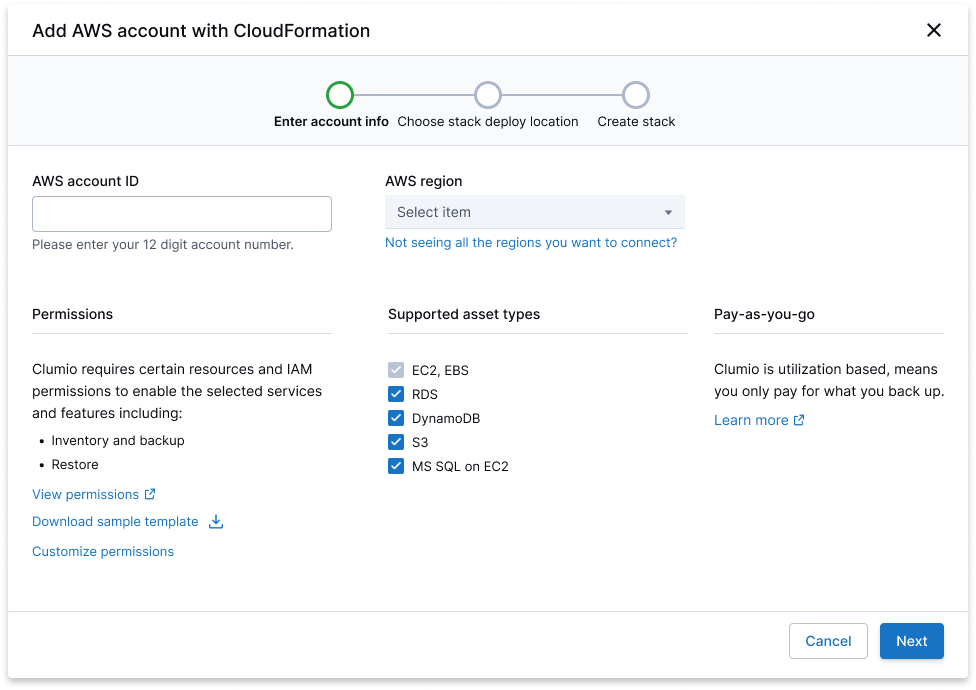
Connect via CloudFormation automatically
Once the stack has been created, check the AWS > Connect page for the connection status. You should see the results in about 5-10 minutes.
While you're waiting for your account to connect, feel free to proceed to next step in this guide.
Connect via Terraform
Clumio's Terraform provider allows you to onboard multiple AWS accounts / regions at one time. For detailed instructions see Connecting an AWS account using Terraform.
Connect account manually
For detailed instructions see Connecting an AWS account manually using CloudFormation.
Step 2. Schedule your backup frequency and retention
Go to Protect > Backup policies to automate your backups. You can edit the default policy provided or create a new policy.
Within the policy, pick one or more asset types to protect, like EC2 or S3, and choose the backup frequency, retention, and other options for each type.
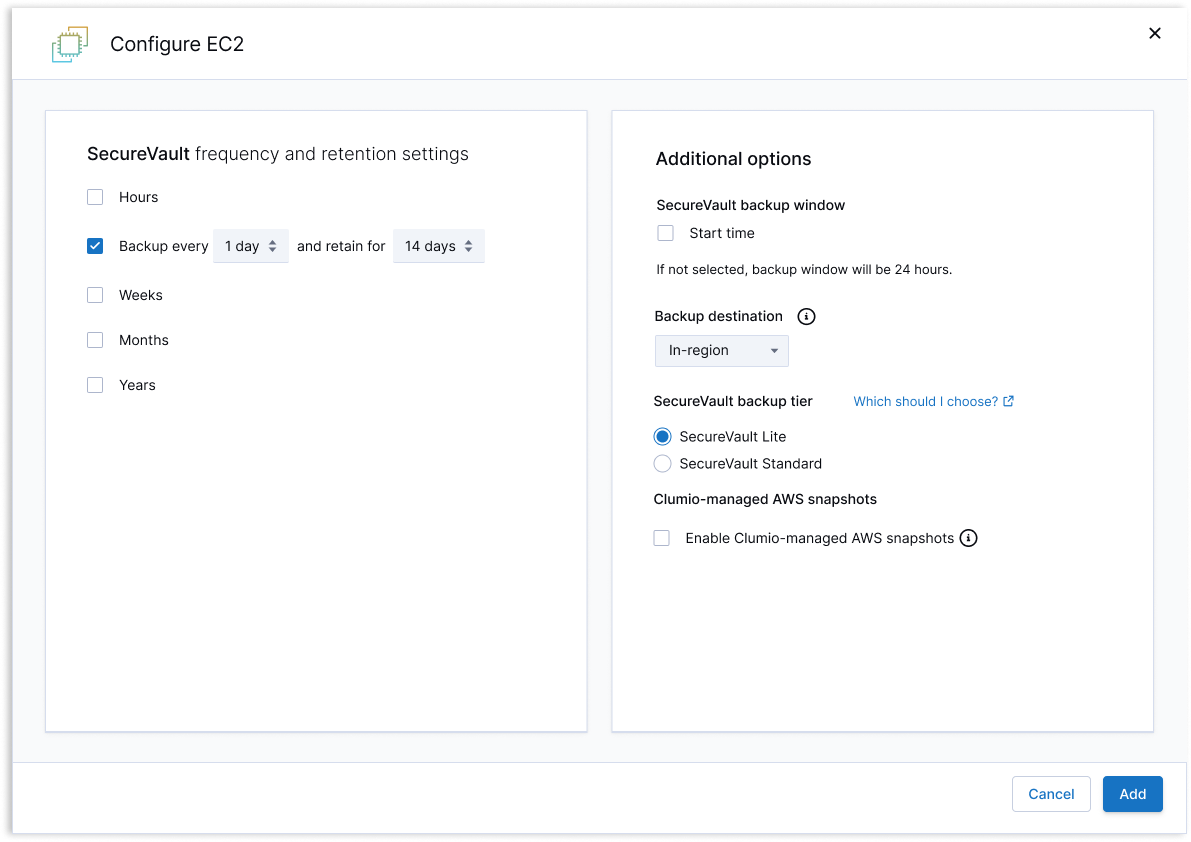
Clumio policy configuration
Step 3. Start a backup by applying your policy
Apply a policy to EC2, EBS, RDS, and DynamoDB
For EC2, EBS, RDS, and DynamoDB assets, go to Protect > AWS protection rules to automate policy application across multiple accounts and regions. For more information, see AWS protection rules.

Create protection rules for EC2, EBS, RDS, DynamoDB
Apply policy to S3
To apply a policy to S3 buckets, go to Protect > S3 protection groups. Protection groups combine S3 buckets, prefixes, and storage classes into a single logical group, simplifying data protection across multiple buckets. For more information, see S3 protection groups.
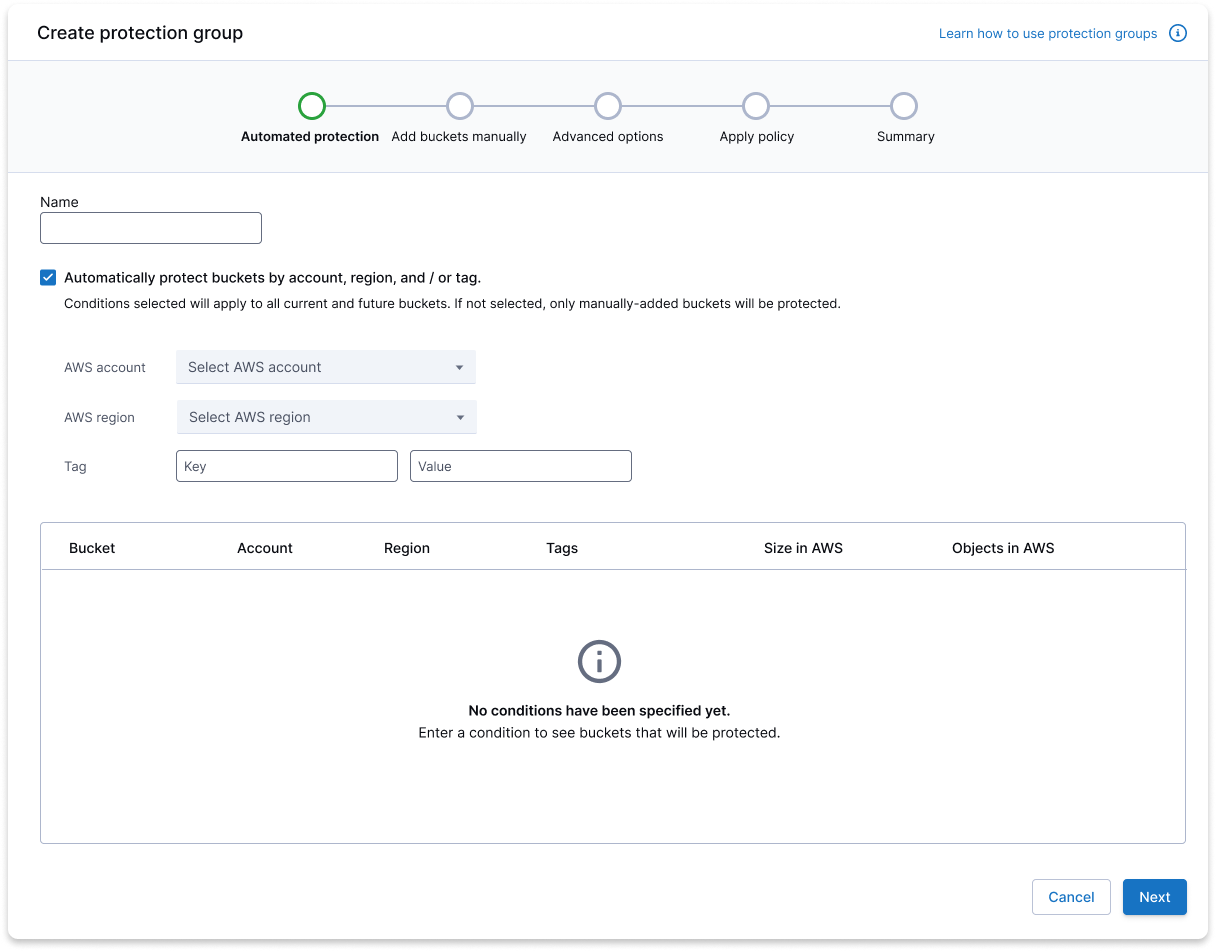
Create a protection group for S3 buckets
You can track the progress of the backup task under Activity > Tasks.
Step 4. Test a restore
Once a backup task is complete, on the Clumio UI, select Restore > Asset type from the left hand navigation to search for an asset by its name/ID, or browse AWS > Inventory to find the asset you would like to restore.
Clicking into a protected asset will show you the backup calendar, select a restore point from the calendar. Click through the restore wizard and select the options per your requirements, such as account and region.
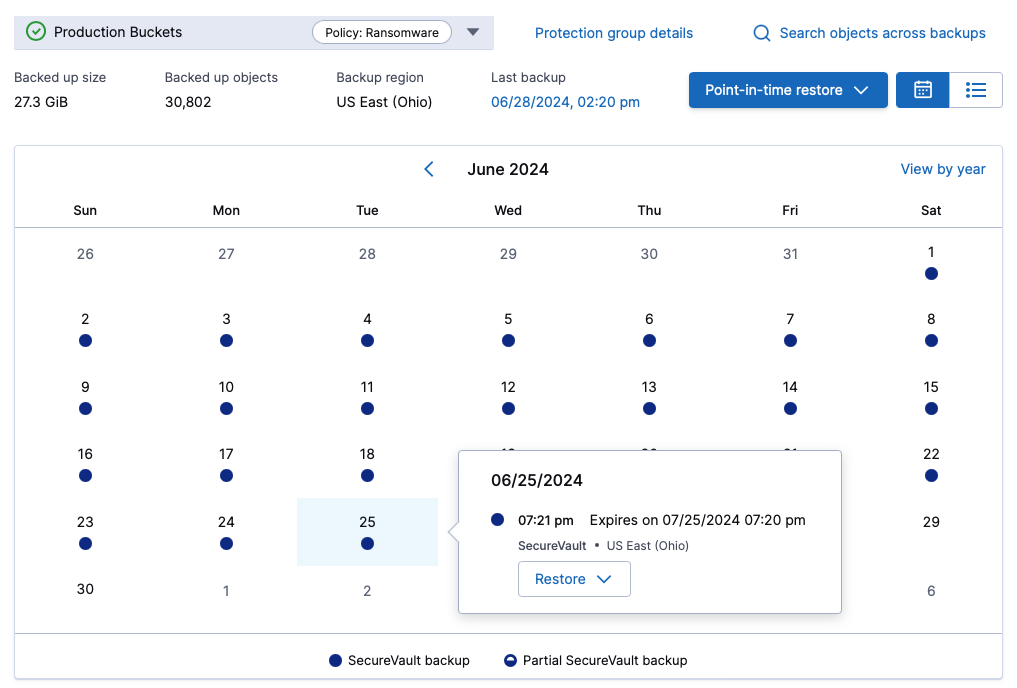
S3 backup calendar with continuous backup enabled
For more details about how to restore from each asset type, see Restore.
Step 5. Understand Clumio’s pricing model
Clumio charges based on consumption. You only pay for what you use and there are no minimums, hidden fees, or licenses to manage. To see your current consumption and credits remaining, check the consumption widget from your global header.
To gain deeper insights, go to the consumption report under Reports. There you can view your consumption data in credits, dollars, or usage (e.g. total GiB backed up). Consumption data will always be displayed as of 11:59pm UTC of the previous day.
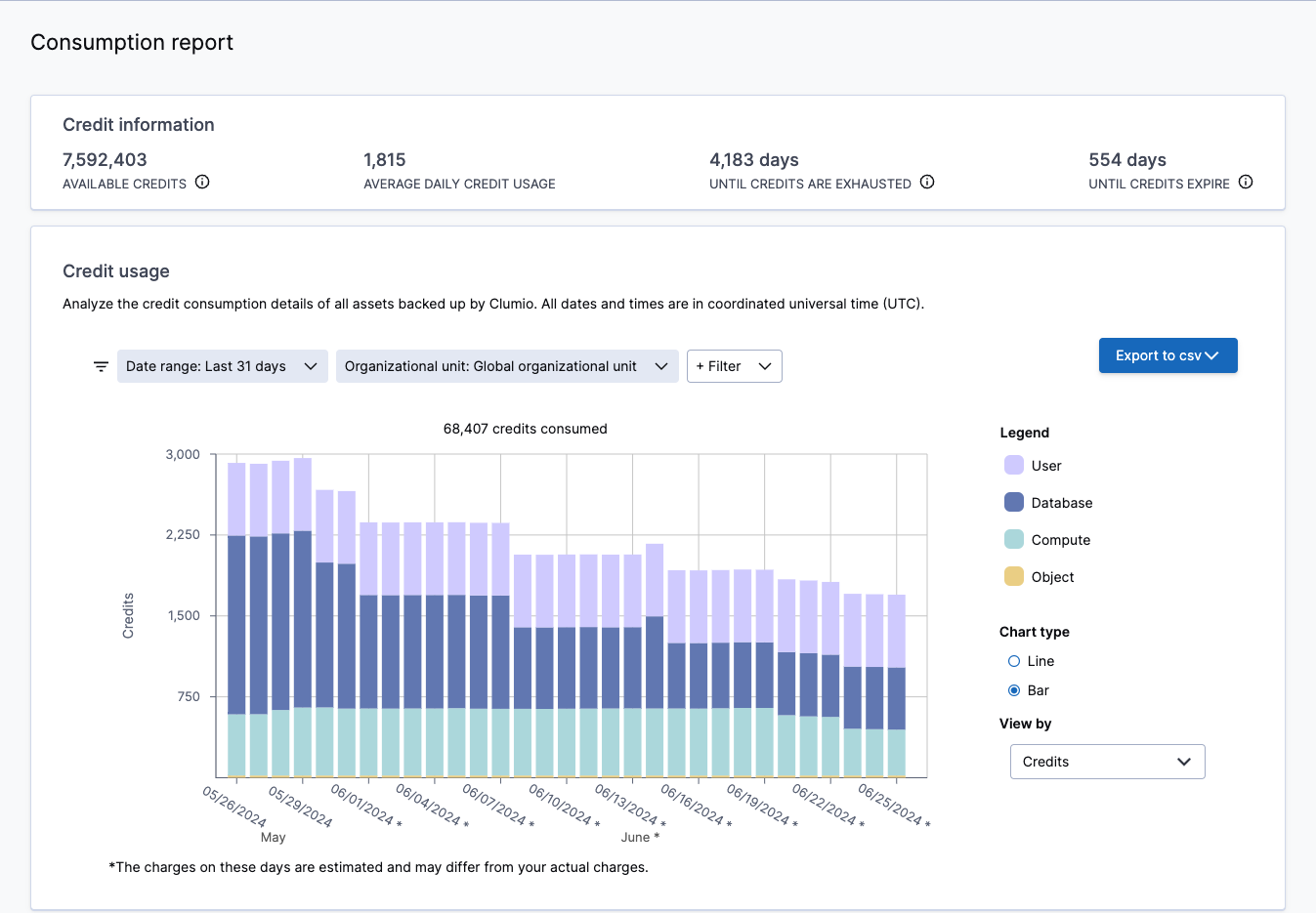
Explore the Clumio pricing chart to understand how Clumio charges for backups and restores of different asset types. To sign a commit-to-consume contract, contact our sales team.
Updated about 1 year ago